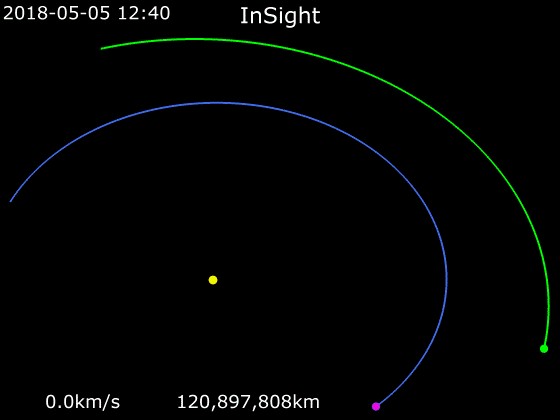Mars welcomes three new missions - developed by three countries - in this month of February 2021. Why such a crowd? We explain everything to you.
The planet Mars is having its two busiest weeks in 47 years. First, the UAE's "Hope" probe successfully entered Mars orbit on February 9th. . The objective of this mission will be to characterize the very dynamic weather system of the red planet.
Then, this Wednesday February 10 , it was China’s turn to shine. Again, the Tianwen-1 mission successfully inserted itself into orbit around the planet, setting the stage for its rover's scheduled surface landing in May.
The main objective of this mission will be to probe the distribution of water ice in the Martian subsoil. It will also be about mapping the geological structure of the planet.
Finally, we have the American Mars 2020 mission, which plans to land the Perseverance rover on February 18 in the Jezero crater. For at least two years, the agency plans to search for traces of past life in an ancient river delta.
Three missions, three countries. But then, why so many people all at once? This "Martian party" is obviously no coincidence.
Mars and Earth are like "two runners on a circular track". On one side we have Earth, placed on the inner track, and Mars placed on the outer track. And while Earth completes one revolution around the Sun in about 365 days, the Red Planet completes one revolution in about 687 days.
Also, sometimes Earth "catch up" with Mars and position itself alongside it. Conversely, sometimes the two planets find themselves opposite each other. In this Earth-Mars cycle, Earth and Mars approach each other about every two years (62.1 million kilometers on average).
However, it is not at this precise moment that the agencies which aspire to join the red planet release their mission. In reality, they do so a few months earlier, when the Earth is positioned slightly behind Mars, which it will soon overtake. This positioning allows ships to enter a Hohmann Transfer Orbit , named after the German engineer Walter Hohmann, who devised the underlying mathematics in 1925.
The animation below shows us an example of this Hohmann transfer with the American lander InSight , on Mars since 2018.

This launch window – which shortens travel times and therefore saves fuel – opens approximately every 26 months . It remains open for a few weeks.
Last launch window opened last summer. This is why the United Arab Emirates, China and the United States took the opportunity to launch their mission. The Hope orbiter was launched on July 19, 2020, Tianwen-1 on July 23 and Perseverance on July 30 . Conversely, it would have taken a huge rocket, tons of extra fuel, and much longer to reach Mars from Earth if the planets had been opposite each other.
So that's why all these missions seem to happen at the same time, or almost.
Note that the European Space Agency (ESA) and the Russian agency Roscosmos were also to take advantage of this open window this summer to launch their ExoMars 2020 mission. Unfortunately, technical problems related to the deployment of the parachutes led the two agencies to finally postpone their mission. They will therefore benefit from the next launch window open in 2022.
This is not the first time that Martian orbital space has been so crowded. In 1973, the Soviet Union launched four starships bound for the planet, but one failed to reach orbit. And besides, none of the other three had then worked as planned despite their arrival. Two Soviet spacecraft and one American spacecraft had also been launched two years earlier, in 1971 (partially successful missions).
What's different this year is the great diversity of ships sent there, and the fact that several machines are already active on and around the planet.
NASA indeed has three active orbiters in orbit, the European Space Agency (ESA) also, plus another that it shares with the Russian agency Roscosmos. The Indian Space Organization also has an orbiter. Not to mention NASA's Curiosity rover and InSight lander are still active on the surface.